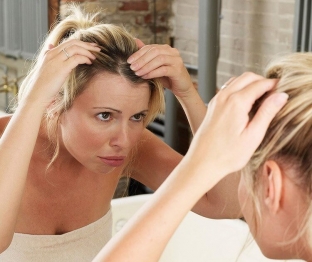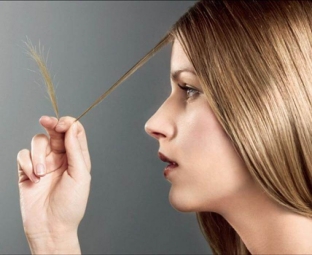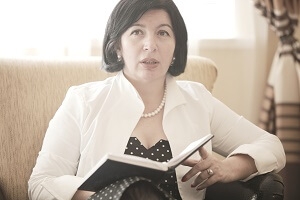This disease has no clear statistics, because many people with its distinct symptoms do not go to the doctor. An obsessive desire to pull out one's own hair – one hair after another, bringing the hair to a significant thinning, and even to focal alopecia – they consider it a bad habit, a manifestation of bad upbringing or weak will, which is a shame to admit to others, and even more so there is no need to ask a doctor for help. Nevertheless, a dermatologist, having seen such a patient with distinct manifestations of plucked hair, will easily identify his problem as trichotillomania and recommend a comprehensive psychotherapeutic treatment.
Specialists define trichotillomania as the recurring inability of a person to resist having their hair pulled out.
For the first time, this term was proposed by the French dermatologist H. Hallopeau to define such an unusual clinical phenomenon. More than a hundred years ago, he investigated and described the disease on the example of a bald young man who pulled out his hair in tufts.
Later, trichotillomania was tried to be classified as a symptom of psychosis, as a psychodynamic conflict, attributed to the group of impulse disorders, mentioned along with obsessive-compulsive disorder in the spectrum of pathology associated with obsessive manipulations with one's appearance.
According to the criteria of the DSM-IIIR Diagnostic and Statistical Manual of Mental Disorders, trichotillomania is characterized by repetitive, compulsive hair-pulling that is perceived by patients as pointless and unwanted, but results in noticeable hair loss.
Diagnostic criteria for trichotillomania are as follows:
- an intermittent inability to resist impulses to pull out one's own hair, resulting in a significant reduction in their number;
- increased feeling of tension just before pulling out the hair;
- satisfaction or feeling of relief during hair pulling;
- no association with pre-existing skin inflammations, delusions and hallucinations.
To be diagnosed, the listed symptoms must have been present for at least 1 year and be severe enough to interfere with the patient's daily life due to feelings of shame about their appearance and/or due to the time spent periodically pulling out their hair.
Despite a rather long history, this disease still has many controversial and debatable points. So, some researchers believe that people with mental disabilities are more likely to suffer from trichotillomania. Other scientists are convinced that such obsessive states are characteristic of people who have a higher level of intelligence than the average person: this is due to the fact that the nature of the disease requires a complex model of thinking.
Some believe that trichotillomania affects boys more often, others observe, that this condition is more common in women.
The average age when trichotillomania manifests itself most severely and frequently is approximately 20 years, although in 10% of cases the disease may manifest after 40 years. As a rule, the onset of the disease is preceded by stress: it can be a difficult birth, the death of a family member, sexual failures. It is often very difficult to identify the cause of the development of the disease. However, looking at the appeals of patients who seek help in overcoming trichotillomania on Internet sites, one can clearly trace the connection between the development of the disease and mental trauma received in early childhood.
I got trichotillomania for the first time at the age of 7, perhaps due to the death of my grandparents and a sudden move, which I really didn’t like. They treated him with the simplest home method - they scolded and condemned such behavior very much. It worked. But at the age of 20, the disease returned.
My daughter (she is 7 years old) has trichotillomania, the disease began after stress in the 1st grade 1 year ago.
Our daughter started to "ruffle" her hair from about a year old, after a long road from rest, I noticed that she began to pull her eyelashes. Now she does it every day, before bed, sometimes just in the afternoon. I want to note that my husband and I, starting from the birth of the child, cursed, he beat me (and in front of the child). Maybe this is how it affected the daughter?
I am 29 years old, I suffer from the habit of pulling out the hair on my head, It all started at the age of 8 and still continues. Self-control doesn't help.
I am 27 years old and have had a strange habit of pulling out my eyelashes for 17 years now. It started a long time ago, when I was in 3rd grade. Since that time, many things have changed in my life, but the habit has remained the same.

Current trichotillomania.
Current trichotillomania – usually undulating: there is an acute onset, which may be followed by spontaneous improvements (remissions) lasting over a year.
Trichotillomania patients usually do not experience pain when they pull out their hair, although the affected areas may itch and burn. Hair follicles show trichomalacia (softening of the hair shafts), which can be detected on a biopsy and helps distinguish trichotillomania from other forms of alopecia.
The scalp is most commonly plucked, but sometimes the eyebrows, eyelashes and beard are also affected, less frequently the torso, armpits and navel area. No pathological features on the skin are found in this case.
Sick people usually do not admit that they pull out their hair, and often hide the cause of baldness. Head bobbing, nail biting, skin scratching, and other self-stimulating activities may occur with this disorder.
In mild forms of trichotillomania, the patient suffers little, but in severe forms, complete disability is possible. Many patients hide their illness: hair-pulling seems to them such a stupid, terrible and indecent act that they are afraid of being embarrassed if anyone finds out about it.
Therapy for this disorder can only be complex – with the participation of a psychotherapist and a dermatologist. The first step for a patient who has addressed a doctor with a problem of hair pulling should be reassured that this is just a disease that is quite treatable, albeit not a quick one.
Psychopharmacological methods used to treat trichotillomania include hydroxycin hydrochloride, an anxiolytic with dual properties - anxiolytic and antihistamine, antidepressants and antipsychotics.

Hypnotherapy is also potentially effective in the treatment of dermatological disorders, since psychological factors play an active role in these disorders. There are many reports of a good prognosis with general, supportive, and critical psychotherapy. However, further study of this disorder is needed to obtain reliable data on the effectiveness of one or another type of treatment.
Expert comment

Abdryakhimova Tsira Borisovna
candidate of medical sciences,
psychotherapist
Trichotillomania can be caused by many factors, but its onset in about a quarter of cases is associated with stressful situations. One of the first such stressful situations can be a violation of the “mother & child” connection, when a woman is forced to leave her baby for some time, even for a few hours, and the child is overwhelmed by the fear of being left alone. If, at the same time, the crumbs, who loved to fiddle with their mother's lock of hair, coincide in time with the return of their mother and winding their own curl around their finger – he will unconsciously repeat this movement in order to hasten the desired action.
The predominant prevalence of trichotillomania among women can be explained by the peculiarities of the formation of childhood sexuality, when a little girl does not observe sufficiently clear identifying feminine behavioral reactions from her mother or becomes a witness to rudeness and violence against her mother. Such a psychological dissonance is subsequently manifested in the girl by childish autoeroticism – thumb sucking, nail biting, masturbation, hair pulling. Moreover, trichotillomania may not appear immediately, but with age.
Sometimes the impetus for the development of this disease is a severe loss (probably projected onto long-forgotten childhood mental trauma during parting) or deep depression.
Before pulling hair, a person usually experiences tension, and as a result, he gets a feeling of relief and satisfaction. The most common localization of foci of plucked hair is the scalp.
Treatment is usually carried out with the participation of psychiatrists and dermatologists, who work together and strictly individually.






Add a comment